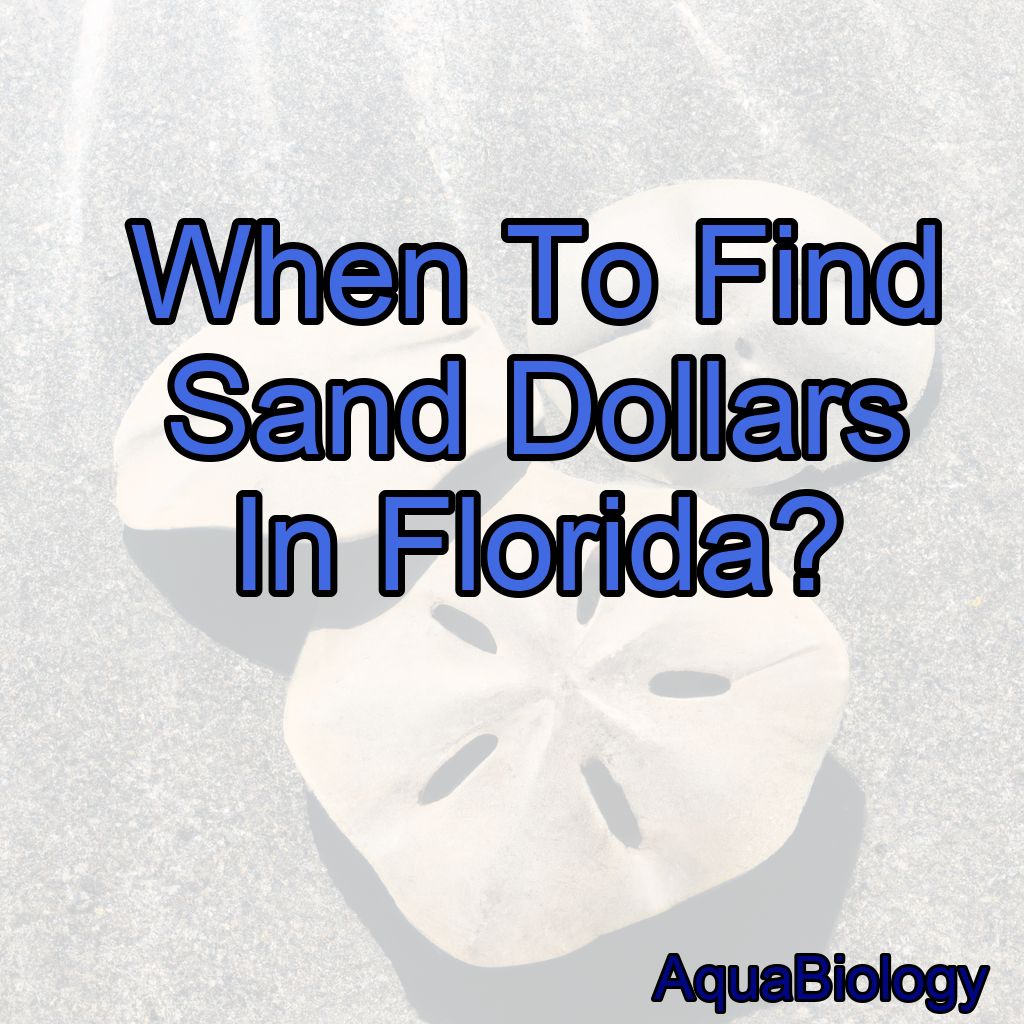As a marine biologist, I have always had a fascination with sand dollars.
Find sand dollars in Florida during low tide, early morning, or late afternoon.
These beautiful creatures are found along the sandy beaches of Florida and are a popular item for collectors.
If you are planning a trip to Florida and want to know when the best time is to find sand dollars, then this post is for you.
What Are Sand Dollars?
Sand dollars are a type of echinoderm, which means they are related to sea stars, sea cucumbers, and sea urchins.
They are flat and round with a hard exoskeleton covered in tiny spines.
They are also covered in small, hair-like cilia that help them move along the ocean floor and bury themselves in the sand.
Where to Find Sand Dollars in Florida
Sand dollars can be found along the sandy beaches of Florida, but they are most commonly found on the Gulf Coast. The best places to find them are along the water’s edge where the waves are breaking.
Look for areas with sandy bottoms and shallow water.
When to Look for Sand Dollars in Florida
The best time to look for sand dollars in Florida is during low tide.
During low tide, the water level drops and exposes more of the ocean floor, making it easier to spot sand dollars.
It is also easier to see them when the water is calm and clear, so try to plan your search on a day with good weather.
How to Find Sand Dollars in Florida

Finding sand dollars in Florida requires a little bit of patience and a keen eye. Look for areas with lots of small shells and debris, as this is where sand dollars are often found.
Move slowly and carefully, and look for circular shapes that stand out from the sand.
How to Identify a Live Sand Dollar
It is important to note that not all sand dollars you find on the beach are dead.
Some may still be alive, so it is important to know how to identify a live sand dollar.
A live sand dollar will have tiny, hair-like cilia covering its body, while a dead sand dollar will not.
If you find a live sand dollar, it is important to return it to the water as soon as possible.
Tips for Collecting Sand Dollars
If you want to collect sand dollars in Florida, there are a few things to keep in mind.
First, make sure you are collecting dead sand dollars only.
Second, be sure to check local regulations to make sure you are allowed to collect sand dollars.
Finally, handle sand dollars gently and avoid touching the spines or cilia, as this can harm the animal.
#
Conclusion: 5 Facts About Finding Sand Dollars in Florida
1. Sand dollars are a type of echinoderm related to sea stars, sea cucumbers, and sea urchins.
2. The best places to find sand dollars in Florida are along the Gulf Coast.
3. The best time to look for sand dollars is during low tide on a calm, clear day.
4. Live sand dollars can be identified by the tiny, hair-like cilia covering their body.
5. When collecting sand dollars, be sure to handle them gently and follow local regulations.
FAQs
What beach in Florida has the most sand dollars? It is difficult to determine which beach in Florida has the most sand dollars as their populations can vary greatly depending on the time of year and environmental factors.
However, some popular beaches for finding sand dollars include Sanibel Island, Captiva Island, and Venice Beach.
How rare is it to find a whole sand dollar?
It is not extremely rare to find a whole sand dollar, but it can be challenging as they are fragile and often break apart during the natural process of washing up on shore.
Can you take dead sand dollars from the beach in Florida?
No, it is illegal to take dead sand dollars from the beach in Florida.
Where is the most common place to find sand dollars?
The most common place to find sand dollars is on sandy ocean floors in shallow water, typically in the intertidal zone.
How deep do you have to dig to find sand dollars? Sand dollars are typically found in shallow water near the shore, and they can often be found just below the sand surface.
Therefore, you do not need to dig very deep to find them.
What month is best to find sand dollars?
Sand dollars can typically be found year-round, but the best time to find them is usually in the late summer and early fall months when the water is warmer and calmer.




